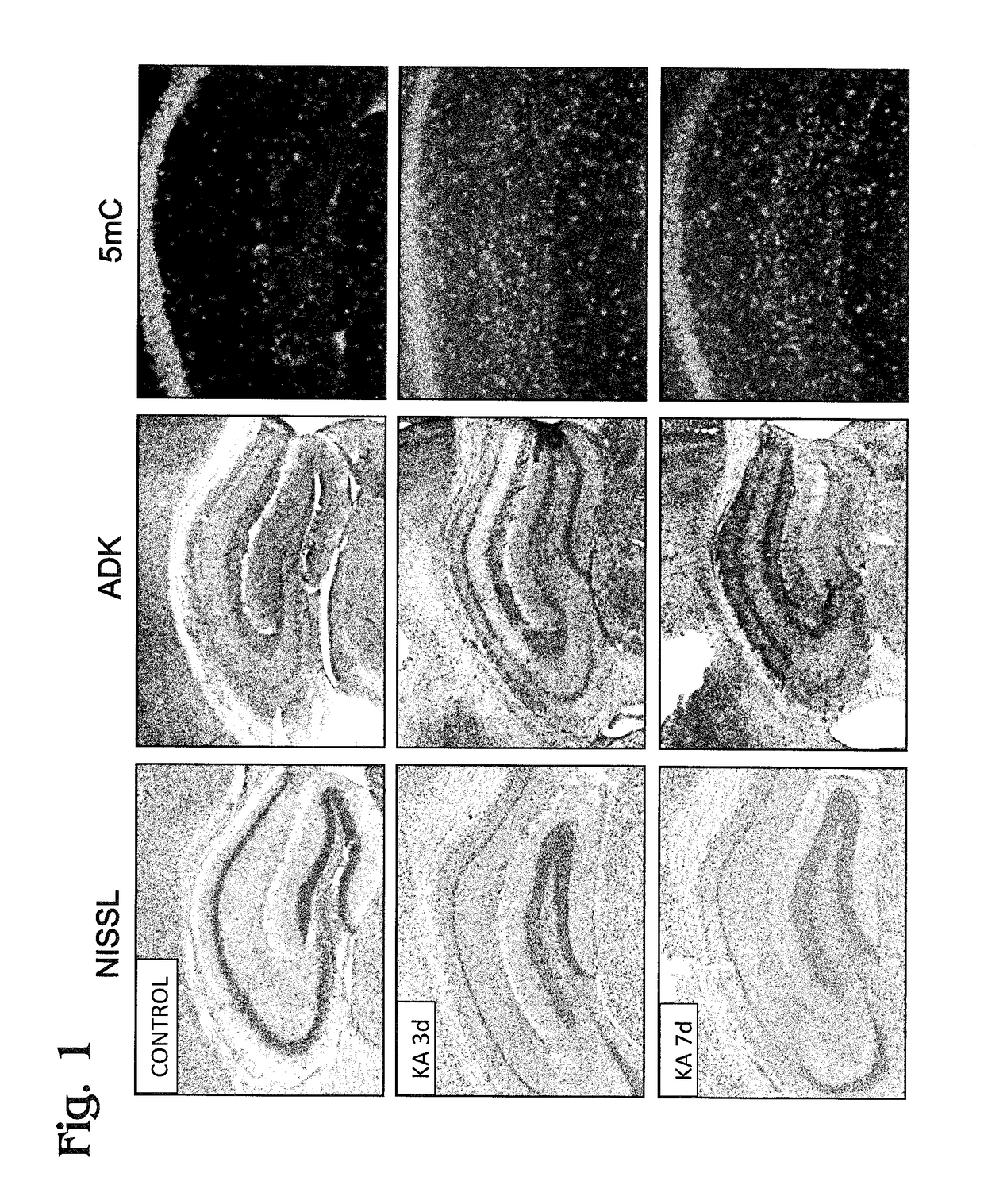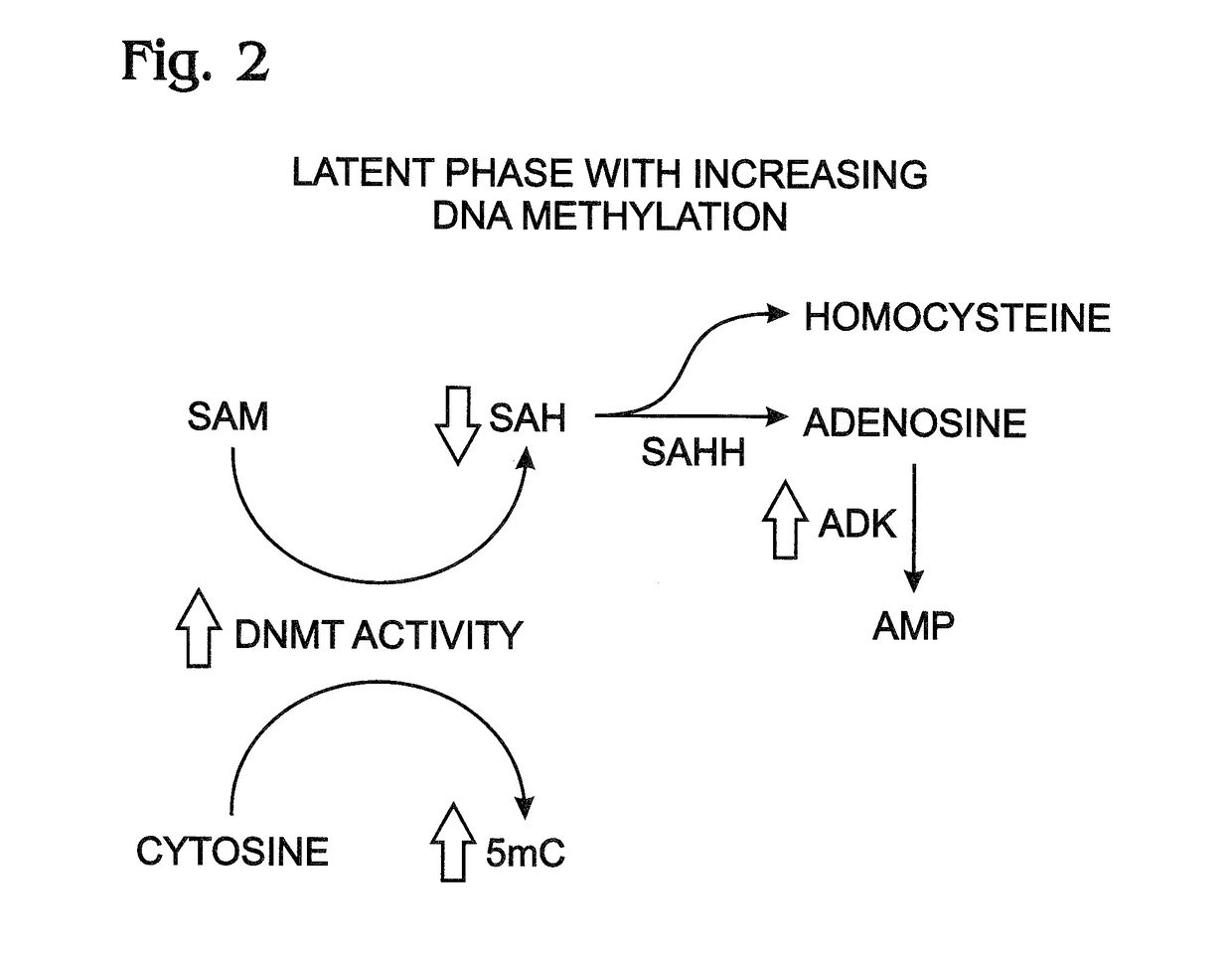Transient inhibition of adenosine kinase as an Anti-epileptogenesis treatment
- Summary
- Abstract
- Description
- Claims
- Application Information
AI Technical Summary
Benefits of technology
Problems solved by technology
Method used
Image
Examples
example 1
ADK and 5-Methylcytosine (5mC) Regulation During Epileptogenesis
[0040]This example presents data suggesting a linkage between increased ADK levels and epigenetic modification of DNA by cytosine methylation with DNA methyl transferase (DNMT); see FIGS. 1-4.
[0041]FIG. 1 shows a set of images of mouse hippocampal sections prepared from hippocampi collected from control mice (no kainic acid (KA); top row of images) or during the latent phase of epileptogenesis in mice after intrahippocam pal injection of kainic acid to produce status epilepticus (SE). Here, SE is the precipitating event that triggers epileptogenesis. The middle row and bottom row of images respectively represent 3 days (3 d) and 7 days (7 d) after exposure to kainic acid. These time points are within the latent phase of epileptogenesis, before recurrent seizures begin. The three panels in each row are images of sections stained respectively with a Nissl stain, an anti-ADK antibody, or an anti-5-methylcytosine antibody. ...
example 2
Transient ADK Inhibition Prevents Epileptogenesis
[0044]This example presents data showing the ability of transient ADK inhibition to prevent development of epilepsy in a mouse model; see FIGS. 5-14.
[0045]FIG. 5 shows a timeline for the protocol followed to trigger epileptogenesis in mice, administer an ADK inhibitor, record electrical activity (EEG), and collect tissue samples. Kainic acid (KA) was administered intrahippocampally (IH) at day 0 to produce status epilepticus. An ADK inhibitor, ITU, (or vehicle alone) was administered intraperitoneally (ip) from day 3 to day 8, for a treatment period lasting a total of five days. The ITU was injected either once per day at 3.1 mg / kg or twice per day (bid) at 1.6 mg / kg. At six weeks and nine weeks, the subjects were analyzed by EEG alone or EEG and histology, respectively.
[0046]FIGS. 6 and 7 show bar graphs reporting the frequency of seizures and the time spent in seizures at six weeks after triggering epileptogenesis, as a function of ...
PUM
 Login to View More
Login to View More Abstract
Description
Claims
Application Information
 Login to View More
Login to View More - R&D
- Intellectual Property
- Life Sciences
- Materials
- Tech Scout
- Unparalleled Data Quality
- Higher Quality Content
- 60% Fewer Hallucinations
Browse by: Latest US Patents, China's latest patents, Technical Efficacy Thesaurus, Application Domain, Technology Topic, Popular Technical Reports.
© 2025 PatSnap. All rights reserved.Legal|Privacy policy|Modern Slavery Act Transparency Statement|Sitemap|About US| Contact US: help@patsnap.com



